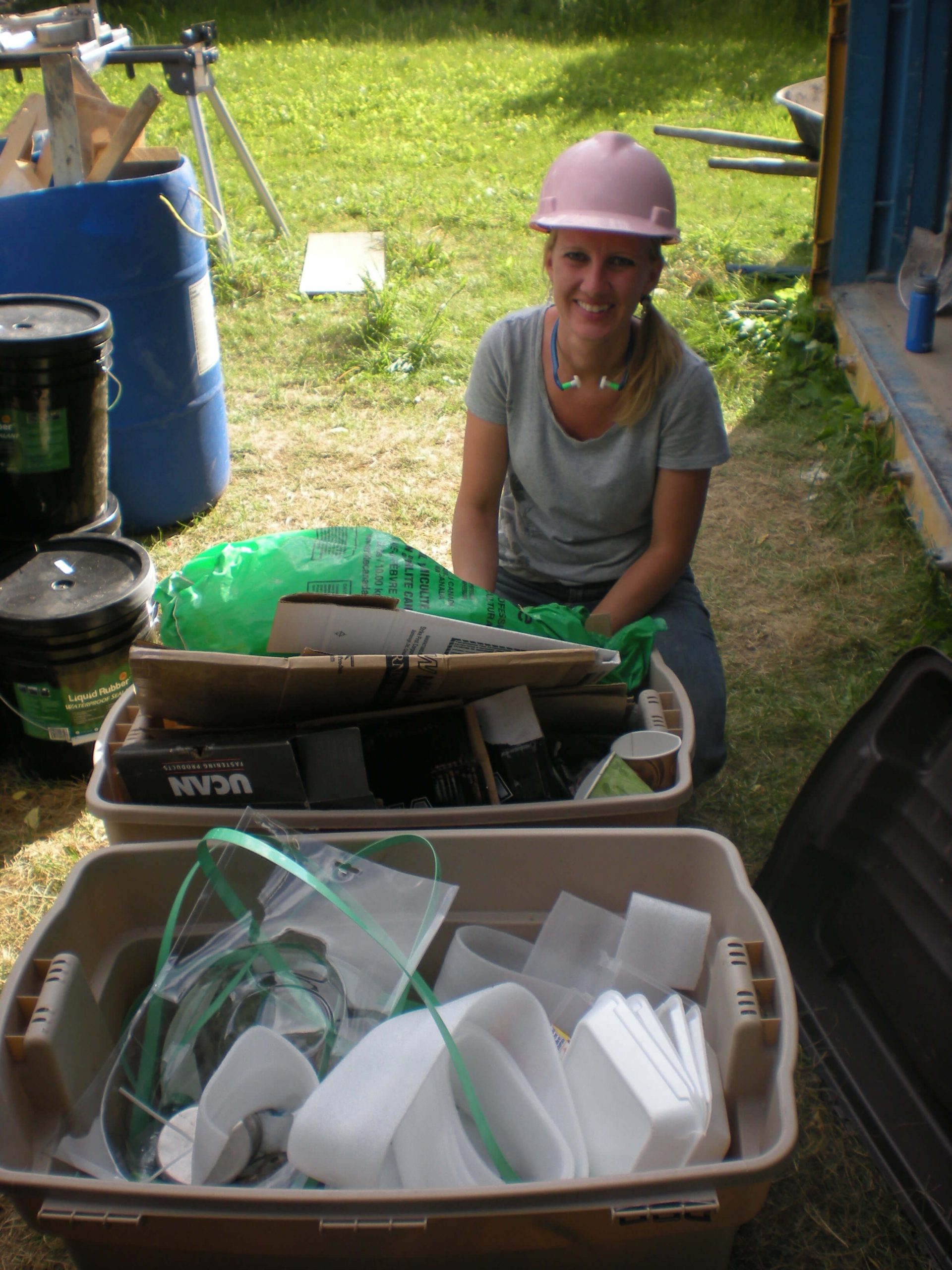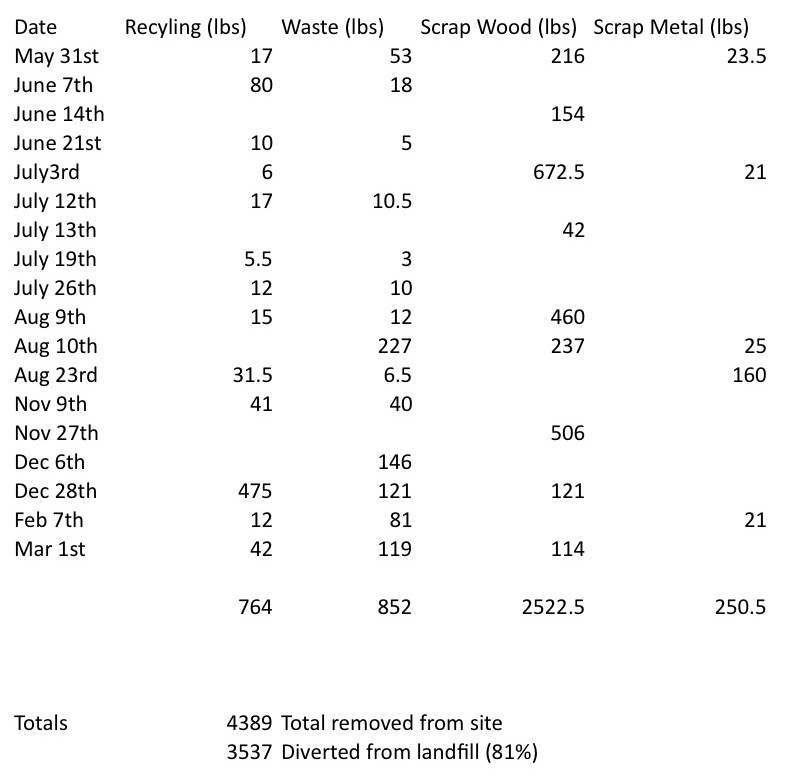In the province of Ontario in 2002, “1.2 million tones of solid waste were generated from the construction and demolition sector” (Development of Construction and Demolition Waste Recycling in Ontario). A typical home construction project will generate about 8,000 pounds of solid waste per 2,000 square foot home according to the National Association of Home Builders.
The Canada’s Greenest Home project is attempting to seriously limit the amount of material sent to landfill from our construction site. Reuse, recycling and diversion are taken very seriously on this project. To date, we’ve only sent 852 pounds of waste to landfill, and have diverted 3537 pounds to reuse, recycling or other end uses. That is about 10% of the provincial average!
We’ve managed to reduce overall waste to the point where our largest quantity of material going to landfill is floor sweepings! Each time we sweep up inside the building, we pull out any fasteners or recyclable materials before bagging up what’s left. But that dust and debris can weigh a lot, especially after sanding the drywall taping. Our most recent trip to the landfill included 146 pounds of waste, most of which was accumulated floor sweepings. Sawdust, dirt and dust can really add up! We could conceivably bury this material on site, as it’s quite inert. But we wanted to keep an accurate measure of what we “produced” that couldn’t otherwise be reused or recycled.
With landfill tipping costs still artificially low (that is, taxpayers subsidize landfill costs for builders), there is little incentive to reduce job site waste. If municipal governments were to charge appropriately for access to landfill, builders would save money by diverting waste to other streams. In the meantime, it’s not difficult to achieve the significant reductions we’ve managed on this project. Placing appropriate bins on site and labelling them well is the biggest step, followed by designating someone on site to manage waste. Buy-in from subcontractors is important too.
Even minimal improvements on conventional building sites could seriously reduce landfill use and because of this we are working closely with a number of demolition services to come up with better ways to reduce waste. We hope this project sets a high bar for what is possible when it comes to construction waste management.




